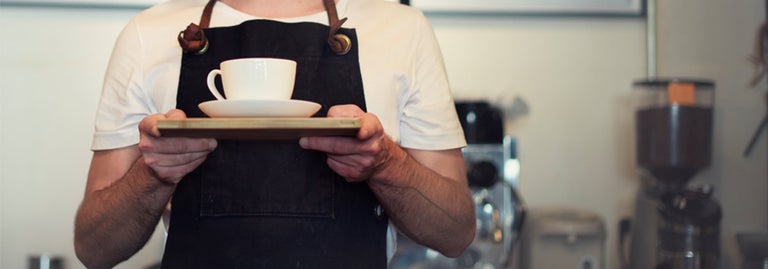78% of Kiwis we surveyed in 2015 say they are confident in their at-home barista skills when making coffee for guests. In fact, nearly half of survey respondents (49%) said they actually prefer the coffee they make at home to the coffee they can buy in a café. 50% say they use their espresso machine at least once a day, if not more.
A home-brewed coffee is even a special treat for 65% of Kiwis. Interestingly, the age group who most considered it a treat were those aged 60 to 69 years old at 78%.
And we all know it’s cheaper to brew coffee at home than to buy it on the street, even after you factor in the cost of buying an espresso machine. 70% of people we surveyed said having their own coffee machine has saved them money they usually spent on café coffees. Aucklanders spend, on average, $14.02 a week on coffee – or $729 per year.
So how have we got to where we are today? The coffee scene in New Zealand is certainly very different today to what it was even a couple of decades ago.
How coffee reached New Zealand’s shores
Ancient coffee legends and consumption methods are available in the National Geographic archives.
Raw coffee was eaten in Ethiopia, Africa, around 800 AD. One of the first legends is of Kaldi the goatherd, who saw his herd dancing from one coffee shrub to another. He tried some of the red berries for himself (which contain the beans) and was soon dancing himself. Historical records show Africans in this era ate protein balls made of coffee beans and animal fat, then made wine from the coffee berry pulp to unwind.
In 1000 AD in Arabia, the roasted beans were first brewed with water. This method travelled to North Africa, the eastern Mediterranean, and India, but nobody outside Africa and Arabia could grow the seed for themselves. In the early 1600s, Indian smuggler Baba Budan stole some fertile seeds from Mecca and fled.
Thanks to Baba Budan, a merchant of Venice brought coffee to Europe in 1615. The Dutch stole a coffee plant in 1616 and successfully brought it to Europe. In 1696, the Dutch founded the first coffee estate on the colony of Java (modern day Indonesia), and these estates began making gifts of coffee trees to European royalty.
Louis XIV of France received a tree as a gift in 1714, but in 1720 a sprout from the tree was stolen by a young naval officer, Gabriel Mathieu de Clieu. De Clieu’s ship was attacked by pirates, nearly shipwrecked, and the sprout was nearly stolen again, but he made it to Martinique in 1770. There, the sprout grew a family of 18 million trees over 50 years, and eventually began the supply of Latin America – today’s most famous home of the coffee bean.
In the late 1800s, coffee arrived in New Zealand! Sealers and whalers who came to New Zealand were sometimes paid in tea and specialty foods – and soon coffee. At the time, it was far less popular in New Zealand than tea because the imported beans were taxed more expensively than tea leaves.
Modern coffee culture in New Zealand
Coffee stayed relatively unpopular in New Zealand until the 1940s, when American servicemen stationed here demanded a ‘cup of Joe’. The 1950s brought a rush of coffee shops, and in 1960s we brought it back home with the invention of instant coffee. Since 1980, Kiwis have been drinking more coffee than tea. In 2005, the New Zealand Specialty Coffee Association was formed to advance professional development through the Barista Guild and the Roaster Guild.
Even in 1996, when the first Coffee Culture coffee shop opened, customers were certain the store would go under if it only sold coffee. But lo and behold! The coffee culture in New Zealand has taken off. We still resist the trend towards chains in favour of Mum-and-Pop cafes, but the quality of the brew is choice.
Like our Italian friends, Kiwis love a cup from an espresso machine. Sorry to all our North American friends – we really don’t do many drip coffees here!
We have been credited with creating the flat white, a cup with textured rather than frothy milk – although there has been endless worldwide debate over the correct milk-to-coffee ratio. And we took it overseas with us as we began to travel more as a nation. Our backpackers were slowly changing the world from behind the counter the espresso machine wherever we found ourselves. We now even export coffee beans to places like the UK.
Today, you can find the perfect cup of coffee anywhere in NZ using the Coffee Secrets guide map or through Zest Food Tours in our capital cities. For a guide to the different terminology for types of coffee, visit Tourism New Zealand’s coffee culture page.
But the fact is, Kiwis are also at-home baristas and we now make many amazing types of coffee in our own homes. We add butter and coconut oil to coffee to make it smoother. Let’s face it. We make mean coffee.
If you’re interested in saving money and making the perfect cup of brew at home, compare espresso machines on our website.


Share this article